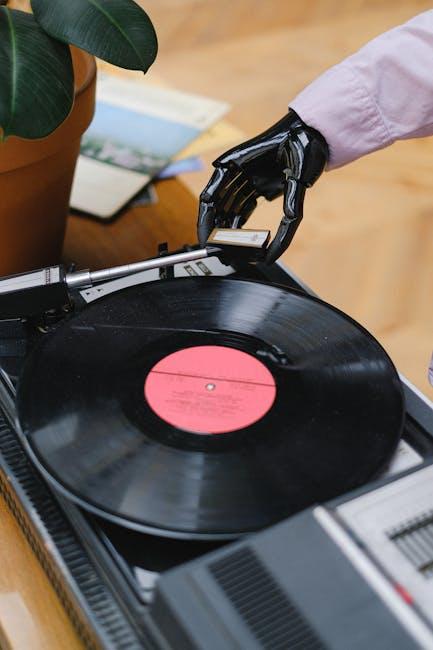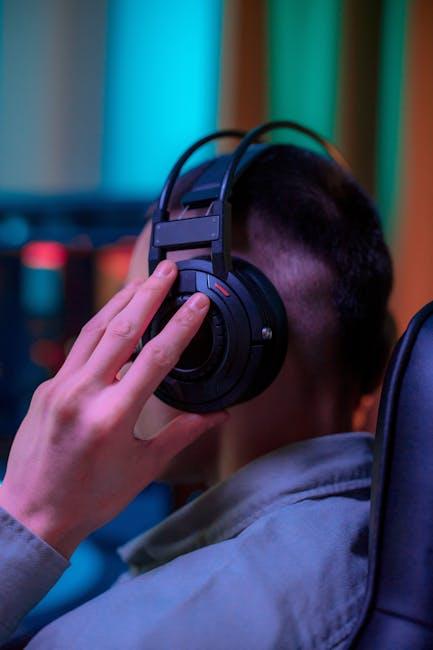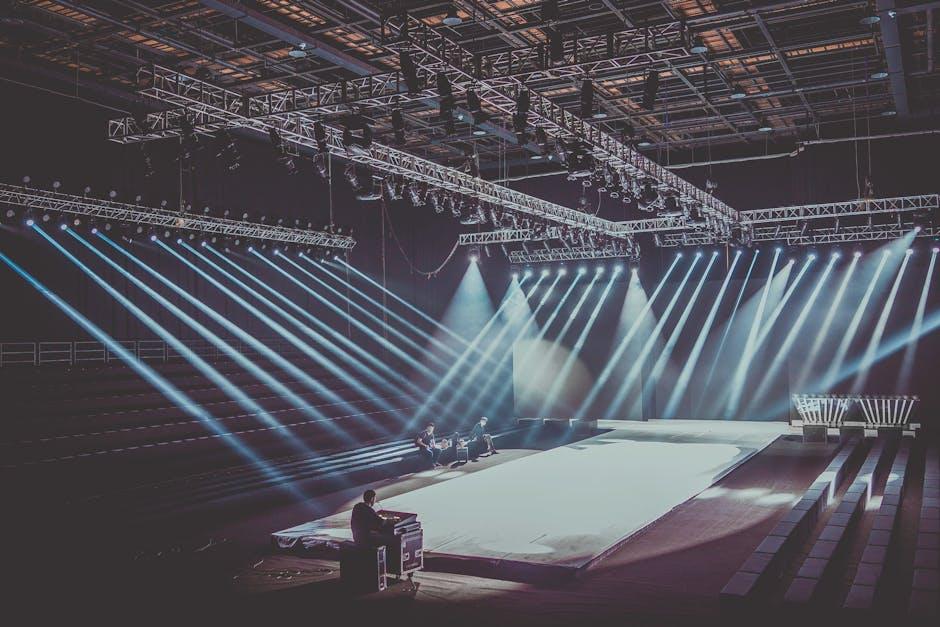As the beats of innovation echo through the corridors of sound, the music industry stands on the brink of a transformative era. In 2025, artists, producers, and listeners alike find themselves navigating a landscape shaped by cutting-edge technology, evolving consumer habits, and fresh creative expressions. This article explores the key trends poised to redefine the rhythm of the music world, shedding light on how melody, market, and meaning intertwine in the years to come. Whether you’re a creator, a fan, or simply curious, dive in to discover what’s setting the stage for the future of music.
Table of Contents
- Emerging Technologies Shaping the Future Soundscape
- The Rise of AI in Music Creation and Curation
- Navigating the Shift Toward Immersive Audio Experiences
- Sustainability Practices Transforming Industry Operations
- Evolving Revenue Models in the Streaming Era
- Strategic Collaborations and Cross-Industry Partnerships
- Q&A
- Final Thoughts

Emerging Technologies Shaping the Future Soundscape
Innovations such as AI-generated compositions and immersive audio technologies are revolutionizing how music is created and experienced. These advancements don’t just automate the production process; they empower artists with new tools to experiment with sound in ways previously limited to studio veterans. From personalized soundtracks tailored to individual moods to virtual reality concerts that transcend geographical boundaries, the industry is entering an era where technology and creativity are entwined like never before.
At the core of this transformation are key technologies driving change:
- Spatial Audio: Crafting three-dimensional sound environments for listeners.
- Blockchain: Ensuring transparency in music rights and fair artist compensation.
- Machine Learning: Offering predictive insights on audience preferences and trends.
- 5G Connectivity: Enabling seamless high-fidelity streaming and real-time interactive performances.
| Technology | Impact | Adoption Timeline |
|---|---|---|
| AI Composition | Accelerates music creation | 2023-2025 |
| Spatial Audio | Enhances immersive listening | 2024-2026 |
| Blockchain | Protects artist royalties | 2022-2025 |
| 5G Streaming | Boosts live experience quality | 2023-2024 |

The Rise of AI in Music Creation and Curation
The fusion of artificial intelligence with music production has transformed traditional barriers, enabling creators to explore uncharted sonic territories. AI-powered tools now assist artists in composing harmonies, generating melodies, and even mastering tracks with unparalleled precision. This technological synergy enhances creativity by offering instant experimentation and feedback, allowing musicians to push their artistic boundaries with ease. Beyond composition, AI-driven platforms curate personalized playlists that adapt dynamically to individual tastes, moods, and listening contexts, reshaping how audiences connect to music on a deeper, more intuitive level.
Several notable advancements underline this evolution:
- Generative AI Models: Capable of producing complex arrangements and original soundscapes in real-time.
- Voice Synthesis: Creating virtual vocalists, expanding the palette for experimental and niche genres.
- Adaptive Playlists: Leveraging user data to constantly refine music recommendations, enhancing engagement.
| AI Feature | Impact on Music | Example Use Case |
|---|---|---|
| Neural Composition | Generates novel melodies | Film scoring |
| Automated Mixing | Optimizes audio quality | Independent artists |
| Smart Curation | Predicts listener preferences | Streaming services |

Navigating the Shift Toward Immersive Audio Experiences
As the music industry evolves, artists and producers are embracing cutting-edge technologies to create richer, more enveloping soundscapes. Immersive audio goes beyond traditional stereo sound by incorporating spatial elements that surround the listener, making every note resonate with depth and emotion. This transformation not only enhances the listener’s experience but also opens new avenues for storytelling, allowing music to become a multidimensional journey rather than a linear playback.
Key innovations driving this shift include:
- Object-Based Audio: Audio elements are treated as independent objects, freely moving within a three-dimensional space.
- Binaural and Ambisonic Recording: Techniques that simulate how human ears perceive sound directionally and spatially.
- Enhanced Playback Devices: Headphones and speakers designed specifically for immersive audio formats.
- AI-Powered Mixing Tools: Automating the spatial placement of sounds for dynamic, personalized experiences.
| Technology | Impact | Adoption Rate (2025) |
|---|---|---|
| Dolby Atmos Music | Immersive 3D sound for streaming platforms | 45% |
| Binaural Headphones | Spatial sound for personal listening | 38% |
| AI Mixing Tools | Automated spatial sound design | 29% |

Sustainability Practices Transforming Industry Operations
The music industry is embracing an eco-conscious revolution, with innovative strategies reshaping how artists, labels, and venues approach their environmental footprint. From renewable energy-powered studios to green touring initiatives, sustainability is no longer a trend but a core operational value. Industry leaders are incorporating carbon offset programs and investing in eco-friendly merchandise, proving that artistic expression and environmental responsibility can harmonize beautifully. This shift not only reduces waste and energy consumption but also appeals to increasingly aware fanbases eager to support ethical practices.
Several pioneering companies have adopted sustainable production methods, highlighted by lightweight, recycled materials for physical media packaging and energy-efficient event lighting. Below is a snapshot of key sustainability metrics changing the game in 2025:
| Practice | Impact | Adoption Rate |
|---|---|---|
| Solar-powered studios | Reduces energy consumption by 40% | 38% |
| Digital-only releases | Decreases plastic waste | 62% |
| Reusable stage equipment | Minimizes material waste | 45% |
| Carbon-neutral tours | Offsets 100% travel emissions | 29% |
- Collaborative artist activism drives policy changes and inspires greener fan movements.
- Smart algorithms optimize venue logistics to reduce unnecessary energy use.
- Innovative packaging blends biodegradable materials with creative design.

Evolving Revenue Models in the Streaming Era
As streaming platforms become the primary mode of music consumption, the industry’s revenue frameworks are experiencing a groundbreaking transformation. Traditional album sales and downloads have given way to subscription models, ad-supported streams, and innovative hybrid approaches. Artists and labels now navigate a landscape where micro-payments from millions of streams accumulate, while exclusivity deals and tiered memberships redefine value perception in fan communities. Streaming algorithms, data analytics, and personalized content curation have become pivotal in monetization strategies, influencing which artists rise and how revenue is distributed.
This paradigm shift has also bolstered alternative income channels that complement streaming royalties:
- Direct fan subscriptions, offering exclusive content and early access
- Blockchain-based royalties ensuring transparent and immediate payments
- Merchandise and virtual concert integration linking physical and digital experiences
| Revenue Stream | 2025 Market Share | Growth Trend |
|---|---|---|
| Streaming Subscriptions | 55% | ↑ Steady |
| Ad-Supported Streaming | 20% | → Stable |
| Fan Direct Support | 15% | ↑ Rapid |
| Blockchain Royalties | 5% | ↑ Emerging |
| Merch & Events | 5% | ↑ Growing |

Strategic Collaborations and Cross-Industry Partnerships
In 2025, the music ecosystem is witnessing a dynamic exchange of value across sectors, with artists and labels strategically aligning themselves with tech innovators, fashion brands, and gaming platforms. These collaborations go beyond mere sponsorships; they create immersive experiences that extend the music’s reach into interactive and lifestyle domains. From exclusive virtual concerts hosted within popular video games to co-branded merchandise lines that fuse musical identity with cutting-edge streetwear, the boundaries of music consumption are continuously redrawn. This cross-pollination enriches fan engagement and opens revenue streams previously unexplored.
Key partnership models dominating this era include:
- Tech Integration: AI-driven music recommendation systems paired with smart devices.
- Fashion Synergies: Collaborations that translate an artist’s aesthetic into wearable art.
- Gaming Interfaces: Incorporation of original soundtracks and live events within popular gaming universes.
| Partnership Type | Example Collaborations | Primary Benefit |
|---|---|---|
| Tech & Music | AI playlist creators + Smart speakers | Personalized fan experience |
| Fashion & Music | Artist-branded apparel + Runway shows | Brand extension & visibility |
| Gaming & Music | In-game concerts + Custom soundtracks | Expanded audience reach |
Q&A
Q: What major shifts are expected in the music industry by 2025?
A: By 2025, the music industry is anticipated to undergo a transformation driven by advanced technologies like AI-assisted songwriting, immersive virtual reality concerts, and blockchain-based royalty tracking. These shifts will reshape how music is created, experienced, and monetized.
Q: How will streaming evolve in the next few years?
A: Streaming will continue to dominate as the primary music consumption method, but expect more personalized, AI-curated playlists and interactive features. Platforms might integrate augmented reality (AR) elements to make listening a multisensory experience, blending sound and visuals seamlessly.
Q: What role will AI play in music creation and distribution?
A: AI will become a creative collaborator rather than just a tool. Artists will employ AI to experiment with new sounds and compositions while labels and platforms use it for data-driven marketing and fan engagement strategies, optimizing release timing and promotional tactics.
Q: Will live music concerts change by 2025?
A: Yes, live music will blend physical and virtual realms. Virtual reality concerts will offer immersive experiences for global audiences, while hybrid events will connect in-person and remote fans. Interactive and customizable shows will create deeper artist-fan connections.
Q: How is the business model of the music industry expected to transform?
A: Revenue streams will diversify beyond traditional sales and streaming. NFTs, exclusive digital merchandise, and fan subscription models will provide artists with new income avenues. Decentralized platforms may empower creators by giving them more control over rights and profits.
Q: What challenges could the music industry face with these new trends?
A: Ethical concerns around AI-generated content, digital piracy in virtual spaces, and maintaining artist compensation fairness could become pressing issues. Balancing innovation with inclusivity and authenticity will also be pivotal for the industry’s sustainable growth.
Q: How can emerging artists prepare for the music industry landscape of 2025?
A: Emerging artists should embrace technology by learning about AI tools and digital engagement platforms. Building a direct relationship with fans through social media, NFTs, and interactive experiences will be crucial. Flexibility and continuous adaptation will be key to thriving in the evolving ecosystem.
Q: What impact will these trends have on music fans?
A: Music fans will enjoy more immersive, personalized, and interactive experiences. From attending virtual concerts with friends worldwide to owning unique digital collectibles, fans will become active participants in the music journey rather than passive listeners.
Final Thoughts
As the curtain begins to fall on our journey through the music industry trends of 2025, one thing remains clear: the soundtrack of tomorrow will be shaped by innovation, technology, and an ever-evolving connection between artists and audiences. Whether it’s the rise of immersive experiences, the fusion of AI with creativity, or the shifting dynamics of global music consumption, the stage is set for a vibrant symphony of change. For those who listen closely, the future of music promises not just new sounds, but new ways to feel and share them—resonating far beyond the final note.

